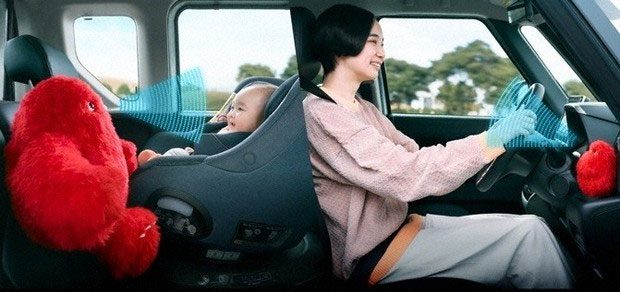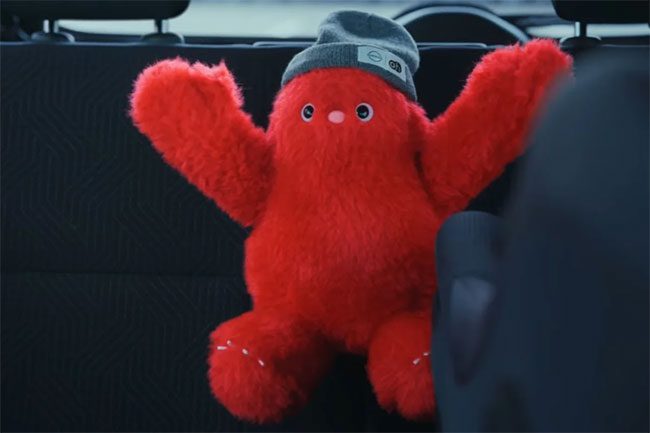Nissan Motor Company and the children’s product brand Akachan Honpo Co. have unveiled prototypes of two robots designed to assist in caring for children in moving vehicles, such as cars.
The stuffed animal robots named “Iruyo” will act on behalf of parents driving to comfort babies in the back seat and inform parents whether the baby is awake or asleep.

This image shows the two “Iruyo” robots installed in a car, each capable of detecting the parent’s voice and the baby’s facial expressions. (Photo: mainichi.jp).
When driving with an infant, for safety reasons, manufacturers recommend placing child seats facing backward. However, this makes it difficult for parents in the driver’s seat to see the child’s face and condition. The two companies conducted a survey with approximately 1,100 parents of children aged 18 months and younger, and the results revealed that over 60% of parents reported driving alone with their young children in the car at least 1-2 times a week. The most common concerns expressed by parents while driving were “unable to soothe the baby when they cry” and “feeling uneasy not being able to monitor the baby’s condition in a rear-facing seat.” Therefore, one robot will be installed facing the baby in the back seat, while the other will face the driver’s seat for convenient monitoring by the parents.
When the driver speaks certain commands such as “Iruyo” (I’m here), “Inai-inai ba” (Peek-a-boo), and two other phrases to the robot nearby, the other robot will wave and perform other actions to soothe the baby.

Iruyo child-soothing robot.
The robot in the back seat also uses a camera to detect changes in the baby’s facial expressions and sends this information to the robot near the driver’s seat, which informs the driver whether the baby is awake or asleep by opening and closing its eyes.
In a demonstration trial with 11 parent-child pairs, 90% of infants showed interest in Iruyo as they watched the robots intently. Currently, the two companies do not have plans to sell the Iruyo robots but will hold real-life experience sessions at Nissan’s global headquarters in Yokohama and other locations starting February 3.
The robot development manager expressed hope to use the prototype model in future technological advancements to support child care.
- What happens when humans travel faster than the speed of light?
- Why did NASA take up to 3 months just to unlock two clasps on a box containing soil samples collected from 6.2 billion kilometers away?
- China’s ‘sand-eating monster’ swallows 40 acres of desert a day, likened to a giant money-printing machine


















































